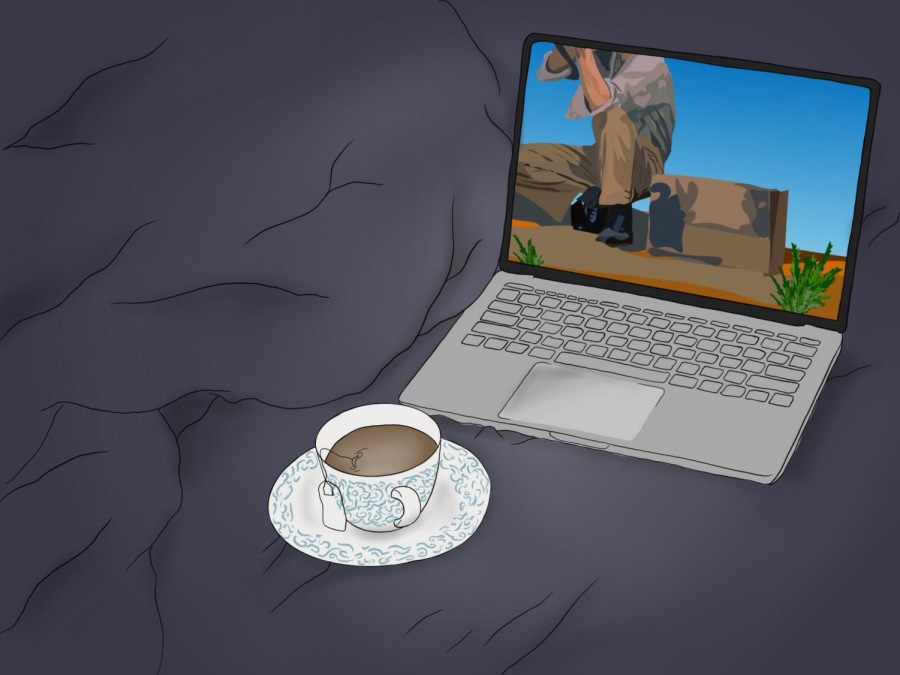Off the Radar: ‘Breaker Morant’ shatters illusions of benevolent empires and noble wars
Off the Radar is a weekly column surveying overlooked films available to students for free via NYU’s streaming partnerships. “Breaker Morant” is available to stream on Kanopy.
“Breaker Morant” is available to stream on Kanopy, free to the NYU community. (Illustration by Aaliya Luthra and Natalia Palacino Camargo)
September 8, 2022
“Breaker Morant” opens to an orchestra of men, all dressed in military khakis with their pith helmets, playing their brass instruments under the Union Jack. The film then cuts to the civilians, both Black Africans and Boers, as they silently look upon the victory parade of their colonial overlords. Set during the Second Boer War, a conflict between the British Empire at the height of its dominance and the nascent Boer Republics, Bruce Beresford’s magnum opus explores the morally complex and innately tragic nature of war. In this gripping courtroom drama, released in 1980, it is not just men who are put on trial, but the idea of empires and a gentleman’s war which are ultimately put into question.
In 1906, three Australian officers who fought under British command, Morant (Edward Woodward), Handcock (Bryan Brown) and Witton (Lewis Fitz-Gerald), find themselves sitting across a military tribunal. The prosecution has charged them with the murder of Boer prisoners and a German missionary. At the onset of the film, it appears that the odds are stacked against our three protagonists. With members of the jury clearly biased, political pressure from the British high command, overwhelming evidence and a seemingly inexperienced defense attorney Major Thomas (Jack Thompson), execution seems inevitable.
However, as the trial proceeds, through heated cross-examinations and flashbacks, the audience realizes that military conduct — especially in this unorthodox guerilla war —is not as simple as following instructions in a field manual.
Aside from the arresting performances from the main cast, the film is elevated by two primary settings: the Pietersburg courtroom and the mountainous expanse of the Transvaal. The courtroom, bound by four faded green and white walls, serves as the purgatorial waiting room for the three protagonists. The confined space sonically enhances scenes of tension. It either echoes heated exchanges or amplifies a deafening silence. Similarly, in the endless stretch of the South African Veldt, every crack of rifle fire reverberates through the environment. Through this, the audience is often reminded of the senseless brutality of war. Beresford creates engaging action set pieces throughout the film, but he never forgets to remind audiences of the horrific consequences of fighting wars. War is not black and white, nor is it ever presented as glorious.
This moral and psychological complexity presented by Beresford could not be more relevant for contemporary audiences. As the pounding of artillery and aerial bombardment can still be heard in many regions today, “Breaker Morant” reminds us of the harsh realities of warfare. The politics behind conflict remain unchanged and reflection on warfare’s personal consequences is all the more necessary.
While those on top play god on their geopolitical chessboard, war disfigures and erodes the soldiers and civilians caught in the crossfire. In the defense’s closing statement, Major Thomas laments that “the tragedy of war is that these horrors are committed by normal men in abnormal situations — situations in which the ebb and flow of everyday life has departed and has been replaced by a constant round of fear and anger, blood and death.”
“Breaker Morant” is available to stream on Kanopy, free to the NYU community.
Contact Mick Gaw at [email protected].

























































































































































